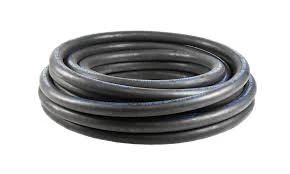power steering hose replacement
Power Steering Hose Replacement A Comprehensive Guide
Power steering is an essential component of modern vehicles, enabling smooth and effortless maneuverability. One vital part of this system is the power steering hose, which conveys hydraulic fluid between the power steering pump and the steering gear. Over time, these hoses can wear out, crack, or leak, leading to a loss of power steering assist and potentially causing damage to the steering system. Understanding how to replace the power steering hose can save you time and money, and ensure your vehicle remains responsive and safe to drive.
Signs That Your Power Steering Hose Needs Replacement
Before considering a replacement, it's crucial to recognize the signs that your power steering hose may be failing. Common indicators include
1. Fluid Leaks If you notice a puddle of reddish-brown fluid under your vehicle, it could be leaking power steering fluid. Check the hoses for any visible cracks or holes. 2. Steering Wheel Difficulty If turning the steering wheel feels stiff or requires more effort than usual, it may indicate a problem with the power steering system, often linked to a failing hose.
3. Unusual Noises Listen for whining or squealing sounds when turning the wheel. This could indicate low fluid levels caused by a leaking hose.
4. Warning Light Some vehicles have a power steering warning light on the dashboard that activates if there's a problem within the system, including hose issues.
Preparing for Replacement
Before diving into the replacement process, gather the necessary tools and materials
- Replacement power steering hose - Socket set - Wrench set - Screwdriver set - Pliers - Fluid catch basin - Power steering fluid - Safety goggles and gloves
Make sure to consult your vehicle's owner manual for specific instructions regarding power steering hose replacement, as the process can vary between different makes and models.
Power Steering Hose Replacement Steps
1. Safety First
Begin by ensuring the vehicle is parked on a level surface. Turn off the ignition and engage the parking brake. Wearing safety goggles and gloves is highly recommended to protect yourself from hydraulic fluid.
power steering hose replacement

2. Locate the Hose
Depending on the design of your vehicle, locating the power steering hose may require some maneuvering. Typically, the power steering pump is found near the front of the engine, with hoses extending to the steering gear. Identify the high-pressure and return hoses, as you'll need to replace the correct one.
3. Drain the Power Steering Fluid
Place a fluid catch basin under the power steering pump to catch any leaking fluid. Using appropriate tools, remove the hoses from their fittings. Be prepared for some fluid spillage, hence the catch basin.
4. Remove the Old Hose
Carefully detach the old power steering hose from its connections. This often involves loosening clamp screws and separating the hose from the fittings. Inspect the old hose for signs of wear, which will confirm the need for replacement.
5. Install the New Hose
Position the new power steering hose, ensuring it aligns correctly with the fittings. Secure it in place with clamps, making sure not to overtighten, as this could lead to damage. Follow the pathway of the old hose carefully to avoid kinks and ensure proper fluid flow.
6. Refill the Power Steering Fluid
Once the new hose is installed, refill the power steering reservoir with the appropriate fluid as indicated in your owner’s manual. Check for any leaks while you fill the system. Start the engine and turn the steering wheel from lock to lock to purge air from the system.
7. Test Drive
After the fluid refill and ensuring there are no leaks, take the vehicle for a short test drive. Pay attention to how the steering feels, and check for any warning lights on the dashboard.
Conclusion
Replacing a power steering hose may seem daunting at first, but with some patience and the right tools, it can be a straightforward DIY task. Regular maintenance and prompt replacement of worn hoses can prolong the life of your power steering system and enhance your vehicle's performance. If you're ever in doubt, consider seeking help from a professional mechanic to ensure the job is done correctly. With a little effort, you can enjoy the smooth, effortless steering that is essential for safe driving.
-
Ultimate Spiral Protection for Hoses & CablesNewsJun.26,2025
-
The Ultimate Quick-Connect Solutions for Every NeedNewsJun.26,2025
-
SAE J1401 Brake Hose: Reliable Choice for Safe BrakingNewsJun.26,2025
-
Reliable J2064 A/C Hoses for Real-World Cooling NeedsNewsJun.26,2025
-
Heavy-Duty Sewer Jetting Hoses Built to LastNewsJun.26,2025
-
Fix Power Steering Tube Leaks Fast – Durable & Affordable SolutionNewsJun.26,2025

